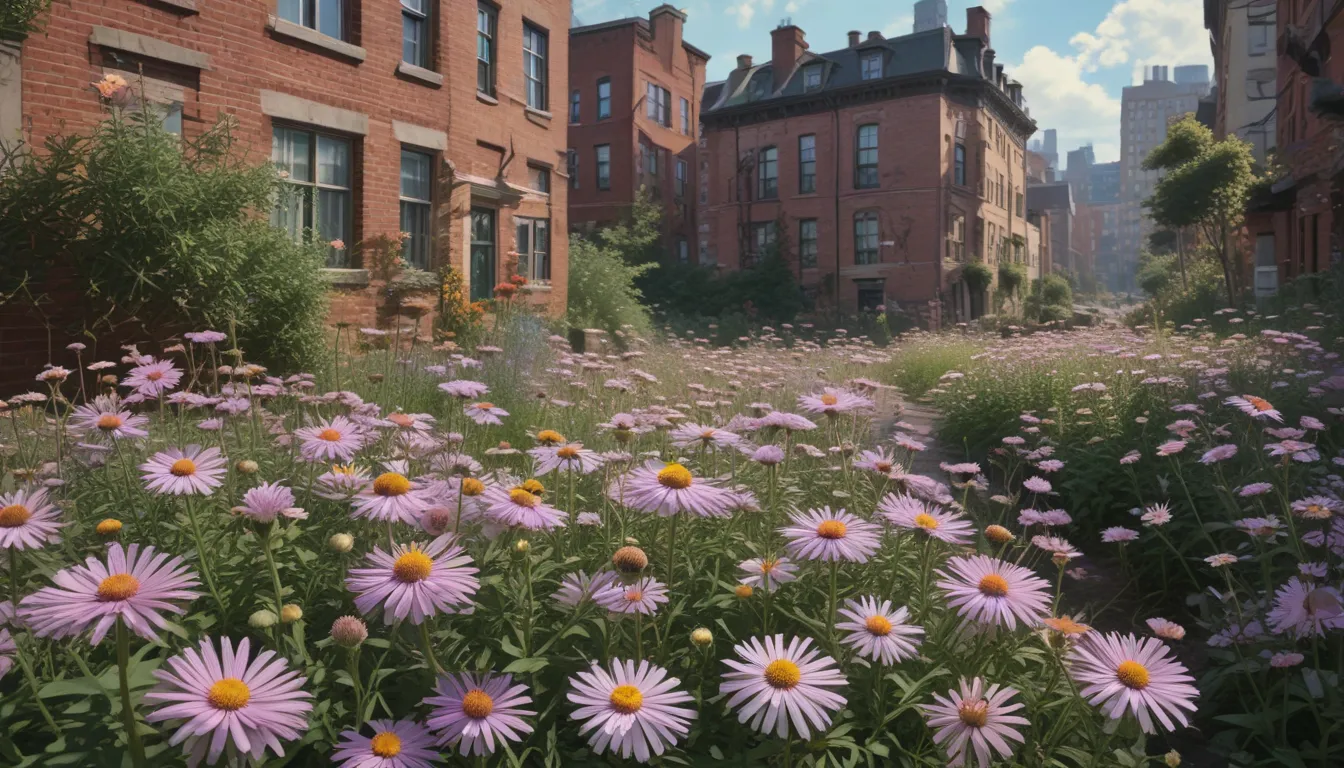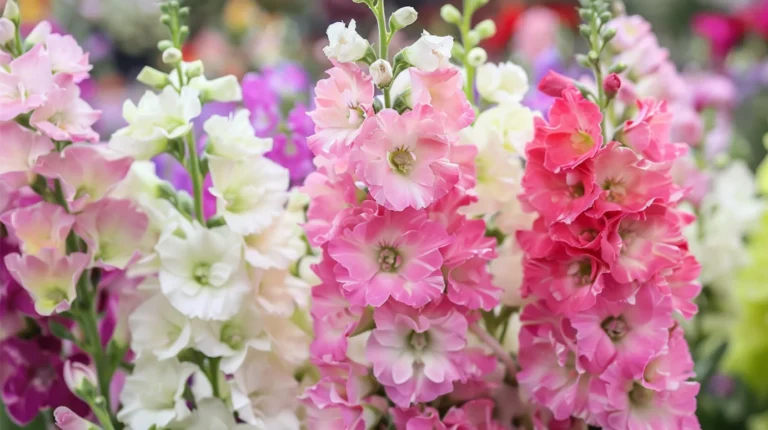Growing New York Asters: A Comprehensive Guide to Cultivating Michaelmas Daisies

Are you looking to add a show-stopping beauty to your garden that thrives in the late summer season? Look no further than the New York Aster, also known as Symphyotrichum novi-belgii. This vibrant plant takes center stage as other summer blossoms fade away.
Native to the eastern United States and Canada, the New York Aster boasts lavender blooms in the wild. However, cultivated varieties come in dazzling shades of pink, purple, and white, adding a pop of color to any landscape. This detailed guide will provide you with all the information you need to successfully grow and care for New York asters in your garden.
Species Overview
Formerly classified under the Aster genus, the New York Aster was officially reassigned to the Symphyotrichum genus in the 1990s. Despite this change, the plant is still commonly referred to as an aster. It is nicknamed the Michaelmas daisy due to its blooming near the feast day of Saint Michael on September 29.
The New York Aster has three varieties found in the wild, each with slightly different traits. The plant can grow between one to six feet tall and spreads one to three feet wide. It is best suited for cultivation in USDA Hardiness Zones 4 to 8.
How to Grow and Propagate
Propagation Methods
Propagation of New York Asters can be done through seeds, stem cuttings, or transplants:
-
From Seed: Start seeds indoors in late winter or direct sow after the last frost. Keep the soil moist and thin seedlings to one per cell once they develop true leaves.
-
From Cuttings: Take a stem cutting in late spring or early summer, and root it in a container of potting soil. Alternatively, place the stem in water until roots form.
-
From Transplants: Starting with nursery plants is a reliable method, ensuring you get the desired variety.
Growing Requirements
New York asters thrive in full sun but can tolerate some afternoon shade. They prefer organically-rich, well-draining loamy soil with a pH between 5.1 to 6.8. Adequate spacing between plants is essential to prevent fungal diseases, with one to three feet recommended for optimal air circulation.
Plants require about an inch of water per week, including rainfall, and benefit from a slow-release granular fertilizer in spring. Divide asters every three years to maintain plant health and prevent overcrowding.
Cultivation Tips
To ensure the best growth and blooming, consider the following tips:
- Plant in full sun.
- Use moist, well-draining soil.
- Water regularly.
- Apply fertilizer in spring.
- Prune for bushier growth and remove damaged foliage.
- Divide plants every three years.
- Cut stalks after the first frost to prevent fungal issues.
Best Uses and Cultivars
New York Aster cultivars come in a variety of vibrant colors and sizes, offering a multitude of options for gardeners. Some popular cultivars include:
- ‘Alert’: Dwarf variety with bright pink flowers, perfect for containers.
- ‘Professor Kippenburg’: Purple flower heads suited for mid-story landscaping.
- ‘Woods Pink’: Semi-double pink blossoms for low-profile color in beds.
These versatile plants are ideal for butterfly, cottage, cutting, rock, and wildflower gardens. They pair well with black-eyed Susans, coneflowers, goldenrod, and other asters, creating attractive and colorful displays.
Pest and Disease Management
Like any plant, New York asters are susceptible to pests and diseases. Common pests include aphids, cucumber beetles, and leaf miners. Additionally, diseases such as aster yellows, leaf spot, and powdery mildew can impact plant health.
To manage these issues, plant pollen-rich flowers to attract beneficial insects and use organic insecticides if needed. Proper spacing, watering practices, and good airflow can help prevent fungal diseases. Remove any infected plant material promptly to limit the spread of diseases.
Quick Reference Guide
Here’s a quick reference guide to help you grow and care for New York asters in your garden:
- Plant Type: Herbaceous flowering perennial
- Native to: Canada and United States
- Hardiness: USDA Zones 4-8
- Bloom Time: Late summer to early fall
- Exposure: Full sun
- Spacing: 1-3 feet
- Height: 1-6 feet
- Spread: 1-3 feet
- Water Needs: Moderate
In Conclusion
New York asters are a versatile and colorful addition to any garden. By following the tips and guidelines outlined in this comprehensive guide, you can successfully grow and care for these beautiful plants in your own outdoor space. Whether you’re a seasoned gardener or a novice enthusiast, adding New York asters to your landscape will bring vibrant colors and late-season beauty to your surroundings.
Have you had experience growing New York asters in your garden? Share your thoughts and tips in the comments below. And for more information on growing and caring for asters, check out our recommended articles. Happy gardening!





